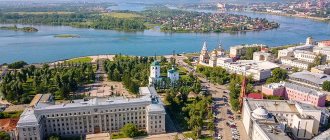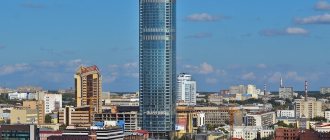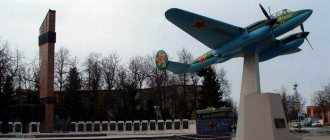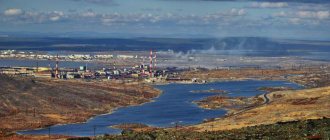The city, located on the Bolshoy Kinel River, was first mentioned in a decree issued by the provincial chancellery in 1748. It concerned one settlement in a settlement in which people did not know their kinship.
During the uprising of the Yaik Cossacks, which in 1773 developed into a peasant war led by Pugachev, which lasted until 1775, the residents of the Buguruslanskaya settlement supported the rebels, and the tragic ending of those events was the capture of the city by troops commanded by Major General Golitsyn.
During the period of its development, this historical city has experienced many events worthy of attention. Where is Buguruslan? You can find information about this in this article.
Story
In 1781, the settlement became the center of a fairly large county and received the status of a city, which was part of the Ufa governorship. In the winter of 1796, the urban-type settlement of Buguruslan was included in the Orenburg province, and it was assigned to the Samara province in 1850.
The population in those days was mainly engaged in trade, cattle breeding and arable farming. These places were famous for their rich spring and autumn fairs. Peasants from nearby villages and hamlets brought their products to the fairgrounds to sell their products. There were also various merchant shops here - meat shops, gingerbread shops, leather shops, fur shops, etc. In the area, next to the shopping arcades, there were tea houses and taverns.
Where is the city of Buguruslan, which in 1822, built up with wooden buildings, was completely destroyed by fire? Revived from the ashes, it again began to grow and develop, largely thanks to the railway laid through it (along the left bank of the Kinel River). The first train passed through the Buguruslan station in the fall of 1888.
Buguruslan
In 1748, by decree of the Orenburg provincial chancellery, a settlement was founded on the Buguruslan River, not far from its confluence with the Mochegai River, which began to be called after the Buguruslan River. (This is probably in the place where the village of Mordovian Buguruslan is now located.) The settlement was populated by people, as they said then, who did not remember their kindred tribe, that is, runaway people: criminals who were hiding from punishment, serfs who fled from their landowners, deserters, Ural workers who left factories due to overwork, etc. Soon the settlement was moved to the site of modern Buguruslan on the Kinel River and from 1781 it began to be called a city.
The most likely interpretation of the name Buguruslan is as follows. The first part of bogu- (bugu-) should be translated into Russian with the word “bull”. Archaeological data indicate that in the past, bison and aurochs lived in the Urals, Bashkiria, the Orenburg province, Kazakhstan, the south of the European part of Russia and other places. Let's give specific facts. In the newspaper “Turgai Regional Gazette” for 1894 in No. 13 we read: “In the Turgai region (Kazakhstan. - B.M.) Turgai lived in the past, their skulls have been found...” [275, No. 13]. I. A. Kastanye [105] reported: near the Platovsky redoubt on the Samara River, “in addition to flint tools, many bones of two species of extinct bulls were found” (bison? tur?). In the note “Bison in the Urals” we read: “Bison were encountered near Yekaterinburg” [83]. Another issue of the same “Orenburg newspaper” [176, no. 724] says: “In the Orenburg region, the bones of a primitive bull (tur) are more often found.” The regional newspaper “Southern Ural” published an article “A find in a pit”, it reported: “In Novotroitsk, at the construction site of a blast furnace, excavator operator P.P. Korolenok extracted the bones of a wild bull, a bison, from the pit” [101]. Further, we can say with confidence that in the territory where the Buguruslanka River flows, bison lived in the past. On this basis the river got its name; the river Buguruslan is a literal translation of the name Byk-lion, Byk-hero, the river Zubrov, Zubrovka.
In 1781, when the Ufa governorate was established, the Buguruslan settlement was transformed into a district city of the Orenburg province, but in 1797 “the new city was left to the state.” Soon, in 1802, Buguruslan was restored as a county town in the Orenburg province, and in 1850 it was transferred to the newly created Samara province, retaining its title as a county town.
From 1851 to 1928, Buguruslan was part of the Samara province. The district was then simply huge - in the east its borders went beyond Abdulino, in the north - beyond the Volga-Bugulminskaya road, in the west - beyond the Krotovsko-Sergievskaya branch, in the south - beyond Pilyugino, Matveevka, Ponomarevka. For comparison, we can say that the current area of the district is six times smaller. There were 228 rivers and streams, 6 lakes on the territory of the county.
In 1811, the city's population was 1,300, in 1897 - 12,141, and in 1910 - 15,000. In Buguruslan there were soap factories and wax factories, and fairs were held. In the city there were the Intercession Convent, 2 churches, a spiritual school, a city 2-class school and 2 parish schools, a women's gymnasium and 2 hospitals.
During the Civil War, the headquarters of the 24th Division was located in the mansion of the merchant Suroshnikov on Moskovskaya Street, 39, and its commander, the hero of the Civil War G.D. Gai, lived. For battles on the Eastern Front, including for Buguruslan, he was awarded the Order of the Red Banner. One of the central streets of the city is now named after Guy. After the Civil War, G.D. Guy commanded the 7th Samara division named after the English proletariat. This division included the Buguruslan and Buzuluk regiments. Guy liked the young squadron commander of the 40th Buguruslan Regiment, Georgy Zhukov. Noting his successes, the division commander promoted Zhukov to the position of assistant commander. Then the famous commander, Marshal of the Soviet Union Georgy Konstantinovich Zhukov gratefully recalled the years of service under the command of the hero of the civil war G. D. Gai.
On March 18, 1919, the district military revolutionary committee was formed
On March 14, Kolchak’s troops, moving from the east, captured Ufa.
The Ufa provincial committee of the RCP (b) was evacuated to Buguruslan.
On April 15, Kolchak’s Western Army entered Buguruslan. All owners were restored to ownership.
On April 28, the Buguruslan operation unfolded, which marked the beginning of the complete defeat of Kolchak; 10 days earlier, Red Army intelligence managed to intercept secret dispatches from Kolchak’s headquarters, which reported a gap of 50 miles between the third and sixth white corps.
On April 30, the Red Army captured Pilyugino and Kuroyedovo. Commissioner of the 25th Division Dmitry Furmanov in his famous novel “Chapaev” called one of the chapters “To Buguruslan”. An integral part of this chapter included the essay “The Pilyugin Battle.” On the same day, the Buguruslan railway station was occupied by the Reds. Kolchak’s troops resisted from the northern bank of Kinel and from the Mikhailovskaya and Valentinovskaya heights.
Only on May 4, after heavy fighting, the Kolchakites left the city and retreated to Bugulma. “Like most cities, not only in these battles, but throughout the entire civil war, Buguruslan was taken by encircling movement,” Dmitry Furmanov wrote in the novel “Chapaev.” Battles rarely happened on the streets of big cities. The main battle, the last and decisive, usually broke out directly on the city approaches; and when this battle was unsuccessful for the defenders, the loser usually left, leaving the city without a fight in the hands of the winner. This was the case with Buguruslan.” Later, in one of his articles about M.F. Frunze, he wrote: “Further events showed what the Buguruslan strike was worth. Kolchak fell all over the front, and in the future the fight against Kolchak was already reaping the laurels of the Buguruslan victory.”
In 1928-1929, the city was part of the Middle Volga region (with its center in Samara), from 1929 to 1934 - part of the Middle Volga region (the center is also in Samara).
Since 1934, the city has been part of the Orenburg region (from 1938 to 1957 - Chkalov region).
In 1938-1941, the Bashkir-Tatar Pedagogical School operated in the city.
On August 6, 1942, the State Defense Committee (GKO) adopted a resolution on the construction of an oil refinery in Buguruslan. The deadlines for the construction of an important defense enterprise were set to be extremely strict - at the end of 1943 the plant was to be put into operation.
In December 1942, more than a thousand people were already working at the construction site. But there was a shortage of qualified builders and installers, as well as metal structures, pipes, cement, cables, and other scarce materials. Additional difficulties arose due to the sharply deteriorating situation at the front, with fierce fighting in the Caucasus and in the areas of Stalingrad. In the same year, the State Defense Committee decided to build a gas pipeline from Buguruslan to Kuibyshev, which became the second capital. Many central government institutions were evacuated here and an option was being prepared for the evacuation of the entire government.
On September 22, 1942, the State Defense Committee adopted a resolution “On measures to fully accelerate the increase in oil production at the Kazakhstanneftekombinat, Permneftekombinat and in the trusts “Buguruslanneft”, “Syzranneft”, “Ishimbayneft”, “Tuymazaneft”, “Turkmenneft”, “Kalininneft” and “ Voroshilovneft. Essentially, it was an extensive program to create a powerful oil-producing and oil-refining region in the Volga-Ural region “Second Baku”.
In 1942, there were already 270 wells in operation. In the first war year, compared with the previous year, oil production increased more than four times.
Buguruslan became the first city in the region in which gasification began during the war - first at industrial enterprises of the trust, at a bakery, mill, and other facilities, and then in residential buildings. On September 15, 1943, the country's first large gas pipeline went into operation, regular gas supplies began to enterprises, and then to residential buildings in Kuibyshev. The underground gas pipeline, laid in 1942-1943, operated for a long time - it provided the huge city with cheap fuel until the end of the war and in the post-war years. Later, Kuibyshev, whose population exceeded a million people, began to receive “blue fuel” through a powerful gas pipeline from Orenburg.
In 1944, the issue of building a gas pipeline from Buguruslan to Orenburg with a length of 240 km or 340 km through Buzuluk was considered. But due to an acute shortage of pipes, this project was abandoned[3].
In the summer of 1943, beekeepers from six collective farms in the Buguruslan region agreed to jointly buy a bomber. They deposited 120 thousand rubles into a special state bank account. In a letter to the State Defense Committee, they asked to hand over a combat vehicle to fellow countryman, military pilot Alexander Dyatlov. Dyatlov fought on this plane until the end of the war. And then, after graduating from the Leningrad Military Engineering Academy, he worked as a senior teacher at the Buguruslan Civil Aviation School.
During the Great Patriotic War, the Central Information Bureau for tracing evacuees operated in Buguruslan. During the Great Patriotic War, there were work columns of German special settlers in Buguruslan. Many Buguruslan residents served in the 358th Infantry Division formed in the Orenburg region. They fought in January 1942 on the Northwestern Front near the small town of Ostashkov, at the source of the Volga, and then in Belarus. Then on the Leningrad Front, on the Karelian Isthmus, they stormed the reinforced concrete fortifications of the “Mannerheim Line” and took part in the capture of Vyborg. The division was awarded the Order of the Red Banner and received the name Leningrad, and its rifle regiments - Vyborg.
Then the soldiers of the 358th Red Banner Leningrad liberated cities and villages in the northeastern regions of Poland, in East Prussia. Particularly memorable were the bloody battles for the fortified cities of Insterburg and Königsberg. In the summer of 1945, trains with regiments of the division, in an atmosphere of special secrecy, went to the Far East. After which it began to be called the Red Banner, Order of Suvorov, second degree, Leningrad-Khingan Division.
Now the city belongs to the Orenburg region.
origin of name
Information about where the city of Buguruslan is located is given later in the article. In the meantime, let's talk about the origin of the city's name.
The origin of the name is Turkic. Bugaarslan, which later transformed into Buguruslan, consists of the words “buga”, translated as “bull” and the word “arslan”, meaning “lion”. There is another version, according to which the word “bug” is translated as “urena floodplain” or “river flooding the floodplain.” The first word is often found in many toponyms, for example, Karbuga, Bikbuga, Bugulma, etc.
In addition, the word “arslan” can be used in the meaning of “mighty” or “brave”. In this regard, the word “Buguruslan” can be translated as “mighty river”. There are other spelling options for the name of the city: Boguruslan, Bogoroslan. Only in the 19th century was the modern spelling of the name established, and this last new one was received by the settlement from the name of the river that was located not far from this settlement.
In general, the name of the city is interpreted as “mighty river”. Local history scientists claim that the river was exactly like this in ancient times. This is confirmed by the writer S. Aksakov, who wrote that his grandfather bought a plot of land “along the Bolshoi Buguruslan River, fast, deep, and full of water.” It turns out that where Buguruslan is located, a large river used to flow.
Modern Buguruslan
And today this small city, carefully preserving its old traditions, is growing and continuing to develop. It can be called a student city, since more than 9,000 students acquire the necessary knowledge in its educational institutions. The population is about 50,000 people.
The city of Buguruslan is historically interesting, where the house of the merchant Shuvalov (early 19th century), the house of the famous nobleman Rychkov (late 19th century), and the building of a religious school (second half of the 19th century) are located.
In the 70s, in honor of the anniversary of Victory in the Second World War, an alley of military equipment appeared in Buguruslan. Among the cultural institutions in the city there is the Drama City Theater named after. Gogol N.V., local history museum, etc.
The mosque, the Church of the Assumption, the Cathedral of the Holy Trinity, a memorial sign in honor of the founding of Buguruslan, the Monument of Glory, a monument to well No. 1 (the first industrial oil of the Orenburg region was produced in Buguruslan) - all this is the pride of the city residents.
Where is Buguruslan located in Russia?
The city is located in the northwestern part of the Orenburg region. The distance from Orenburg is 260 kilometers, and from the border with the Samara region is 10 kilometers. It is 150 km from Buguruslan to Samara, 990 km to Moscow. This city is the administrative and cultural center of the Buguruslan district and the center of the urban district of Buguruslan. The Bolshoi Kinel River flows within the city's borders. The area of the city is 76 km2.
Geologically, Buguruslan is located on the Bugulma-Belebeevskaya Upland (southern slopes). The height of the southern and central parts of the city is 80 meters above sea level.
Recommendations
Quotes
- ^ a b c d
Law No. 1370/276-IV-OZ - ^ a b Encyclopedia of Russian Cities
. Moscow: Great Russian Encyclopedia. 2003. p. 58. ISBN 5-7107-7399-9. - "26. The size of the permanent population of the Russian Federation by municipalities as of January 1, 2022.” Federal State Statistics Service. Retrieved January 23, 2022.
- ^ a b
State Committee of the Russian Federation on Statistics.
Committee of the Russian Federation for Standardization, Metrology and Certification. No. OK 019-95 January 1, 1997 “All-Russian classifier of objects of administrative-territorial division. Code 53 211”, Ed. changes No. 278 / 2015 dated January 1, 2016. (State Committee of the Russian Federation on Statistics. Committee of the Russian Federation on Standardization, Metrology and Certification. No. OK 019-95 January 1, 1997 Russian Classification of Administrative Objects (OKATO). Code 53 211
As amended by Amendment No. 278/2015 dated January 1, 2016). - ^ a b
State Committee of the Russian Federation on Statistics.
Committee of the Russian Federation for Standardization, Metrology and Certification. No. OK 019-95 January 1, 1997 “All-Russian classifier of objects of administrative-territorial division. Code 53 408”, Ed. changes No. 278 / 2015 dated January 1, 2016. (State Committee of the Russian Federation on Statistics. Committee of the Russian Federation on Standardization, Metrology and Certification. No. OK 019-95 January 1, 1997 Russian Classification of Administrative Objects (OKATO). Code 53 408
As amended by Amendment No. 278/2015 dated January 1, 2016). - ^ a b
Law No. 2367/495-IV-OZ - Law No. 600/153-OZ
- "On the calculation of time." Official Internet portal of legal information
(in Russian). June 3, 2011. Retrieved January 19, 2022. - Post office. Information and computing center of OASU RPO. ( Post office
).
Search for postal facilities ( Search for postal facilities
) (in Russian) - Federal State Statistics Service of Russia (May 21, 2004). “The population of Russia, the constituent entities of the Russian Federation as part of federal districts, urban settlements, urban settlements, settlements, settlements is 3 thousand or more people” [Population of Russia, its federal districts, constituent entities of the federation, districts, urban settlements, rural settlements - administrative centers, rural settlements with a population of more than 3000 people] (XLS). All-Russian Population Census of 2002 [All-Russian Population Census of 2002]
(in Russian). - “All-Union Population Census of 1989. The actual population of the union and autonomous republics, autonomous regions and districts, territories, regions, urban settlements and villages. On the administrative-territorial structure of the Orenburg region.” Came into force after official publication. Published: “Southern Urals”, No. 134–135 (special issue No. 40 with documents of the Legislative Assembly of the Orenburg Region), July 21, 2007 (Legislative Assembly of the Orenburg Region. Law No. 1370/276-IV-OZ of July 11, 2007 On the administrative-territorial structure of the Orenburg region
As amended by Law No. 2826/783-V-OZ of December 15, 2014
On amendments to the Law of the Orenburg Region “On the administrative-territorial structure of the Orenburg region"
. Valid after the date of official publication.). - Legislative Assembly of the Orenburg Region. Law No. 2367 / 495-IV-OZ of September 15, 2008 “On approval of the list of municipalities of the Orenburg region and settlements included in them,” as amended. Law No. 3322 / 917-V-OZ of August 24, 2015 “On amendments to the Law of the Orenburg Region” On approval of the list of municipalities of the Orenburg Region and the settlements included in them “”. Came into force 10 days after official publication. Published: “Bulletin of the Legislative Assembly of the Orenburg Region”, 22nd meeting, Part I, August 29, 2008 (Legislative Assembly of the Orenburg Region. Law No. 2367/495-IV-OZ of September 15, 2008. On approval of the register of municipalities of the Orenburg region and their constituent settlements
As amended by Law No. 3322/917-V-OZ dated August 24, 2015.
On amendments to the Law of the Orenburg Region “On approval of the register of municipalities of the Orenburg region and their constituent settlements
.” Valid according to expiration of 10 days after official publication.) - Legislative Assembly of the Orenburg Region. Law No. 600 / 153-OZ of July 31, 2000 “On the formation of the municipal formation Buguruslansky district of the Orenburg region and the establishment of its boundaries,” as amended. Law No. 942 / 144-III-OZ of March 10, 2004 “On introducing amendments to the Law of the Orenburg Region” Formation of the municipal formation Buguruslansky District of the Orenburg Region and establishing its borders “”. Came into force on the date of official publication. Published: “Bulletin of the Legislative Assembly of the Orenburg Region”, 19th meeting, July 19, 2000 (Legislative Assembly of the Orenburg Region. Law No. 600/153-OZ of July 31, 2000. On the creation of the municipal formation Buguruslansky district of the Orenburg region and on the establishment of its borders
As amended by the Law of March 10, 2004 No. 942/144-III-OZ.
On the addition to the Law of the Orenburg Region “On the creation of the municipal formation Buguruslansky District of the Orenburg Region and on the establishment of its borders"
. Valid from the date of official publication.).










